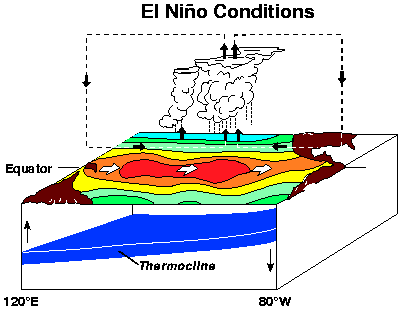As I have noted in a recent blog, it is no surprise that the low snowpack and warm temperatures have occurred over the Northwest during the past month or so.
This is a very typical pattern during El Nino years.
In particular, during El Nino years, when the tropical Pacific is warmer than normal, we often experience low pressure off the West Coast, with storms shunted into California.
To illustrate the current situation, here is the difference from normal of sea level pressure for the past two months. You can see the anomalous low pressure to our southwest.
This pattern pushes the jet stream south and leaves California wetter than normal. But their boom is our bust.
But why does El Nino set up this pattern?
Why do warm sea surface temperatures in the tropical Pacific associated with El Nino alter the pressure and wind patterns off the West Coast.
The answer to this question was found in the late 1970s and early 1980s by two researchers at the UW: graduate student John Horel and Professor Mike Wallace.
First, the warm waters of El Nino (illustrated by the shaded area near the equator) perturb the atmosphere above.
How? By creating lots of thunderstorms over the warm water. Thunderstorms that inject huge amounts of energy into the atmosphere (see below).
A series of waves....called Rossby Waves...then propagate into the midlatitudes, causing a series of low and high-pressure pressure areas (note the L's and H's in the figure in the figure below).
The jet stream....the current of strong winds in the upper troposphere... is distorted by this wave pattern (see the arrows in the figure). This pattern is generally associated with low pressure off the northern CA coast.
This situation is analogous to throwing a rock into a stream, with waves propagating away from where the rock hits the water.In the atmospheric case, big thunderstorms above the warm water act as the "rock,"
During the next few months as El Nino makes way for La Nina, the central Pacific water will cool, the thunderstorms will shift westward, and the wave pattern change substantially.







That's a wonderful way to explain it! Thank you.
ReplyDelete